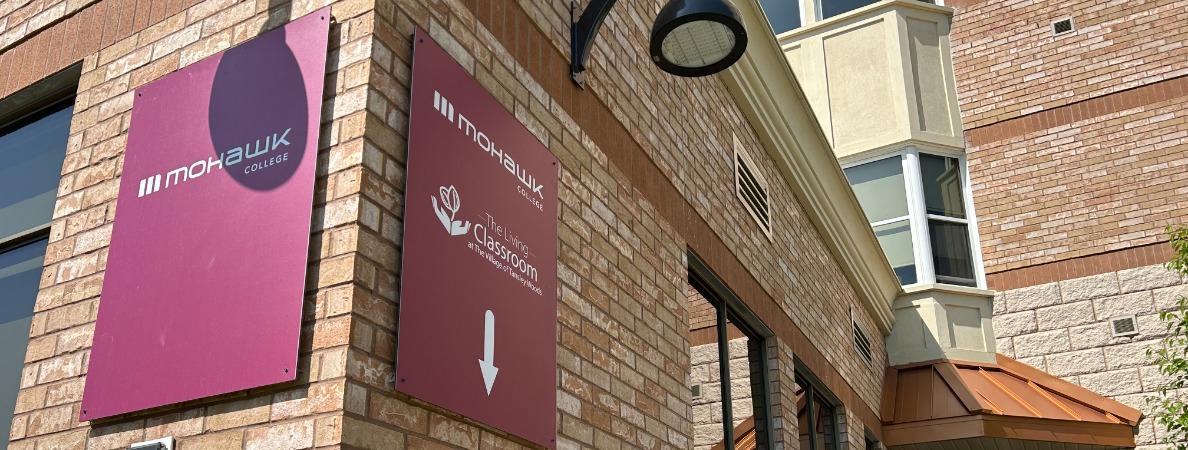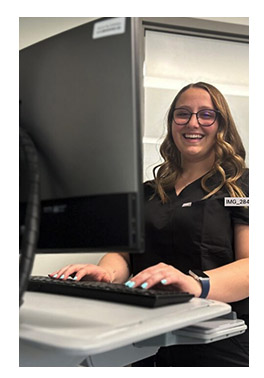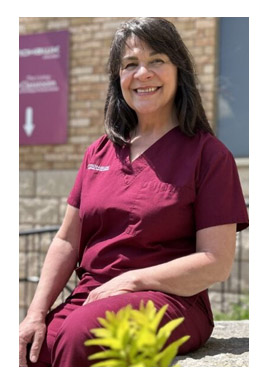
“It's not a schoolroom. It's life,” Carol, a resident of the Village of Tansley Woods, reflects on Mohawk College’s new Living Classroom. Carol’s home will soon double as a classroom, as her retirement community welcomes a new satellite campus for the college. Students from Mohawk College will begin arriving at Tansley Woods this Fall, as they work to apply their theoretical learning in this authentic, real-world setting.
The Living Classroom at Tansley Woods is Mohawk College’s second partnership with Schlegel Villages, a leader in retirement living and long-term care in Ontario.

But what exactly is a living classroom, and how does it work?
Students at the Tansley Woods campus will receive both practical real-world experience and the flexibility that modern learners demand. Theory classes will be offered online, making it easier for our students to balance their studies with their other commitments.
The practice components of their studies, however, will take place in Tansley Woods, either in the College’s modern lab space or on the floor, interacting directly with residents as they go about their daily lives. This innovative approach to learning gives students the opportunity to learn and gain practical experience as they provide supervised care for the Village’s residents.
A Living Classroom is much more than a classroom in a long-term care home. LCs create the opportunity for students to learn and reinforce their learning through real experiences that they may face while on-the-job.
Not only are students learning from their professors while in the classroom, but they also benefit from the experience and knowledge of the long-term care team members who are guiding them outside of the classroom. Both team members and residents do what they can to teach the students, sharing their knowledge and wisdom, which makes the learning experience more meaningful.
“I think it's crucial because as much as you learn the different information in school, I think the information you learn from residents themselves is invaluable,” said Curtis, a social service worker who works at Tansley Woods. “I think the care and services we're providing is specifically for them. So, I think who better to help us learn that than the residents themselves.”
Students learn directly from the resident they’re treating, seeing in real time how certain conditions affect people and their ability to perform simple tasks such as dressing themselves. At the same time, these future caregivers learn about the realities of health conditions directly from the residents and team members they train alongside. The value of hands-on, practical experience in the caring professions can never be overstated.
“Knowing that the people who are working with the residents were trained directly with residents rather than, you know, just the dummies or online or anything like that.,” said Carol, a resident at Tansley Woods for the last 11 months. “I think that it's invaluable because they're seeing life. They're seeing people with certain handicaps, and they can work with them. It's not a schoolroom. It's life.”
As they work with the residents, students often get to know them and form relationships. Not only does this make the learning experience more meaningful, but it also allows for an ease of transfer if the student decides to stay on as a worker once graduation. The students aren’t strangers to the residents.
 Learning in a living classroom shows students that there is more to health care than tending to people in hospitals. There is another path in long term care where their work is needed and appreciated. Not only does learning in a living classroom allow for more intimate care, but it also helps to develop a feeling of community where residents, students and staff are working together for the betterment of everyone.
Learning in a living classroom shows students that there is more to health care than tending to people in hospitals. There is another path in long term care where their work is needed and appreciated. Not only does learning in a living classroom allow for more intimate care, but it also helps to develop a feeling of community where residents, students and staff are working together for the betterment of everyone.
One of the greatest benefits is that students can see the impact that they have on patients firsthand. There’s a difference between learning about helping someone getting dressed in class, and helping a vulnerable person who needs assistance to do something like putting on clothes.
“I can see it becoming more of the norm for a lot of different areas of study,” said Curtis. “I wish there was some sort of setting like this for myself because, I think as much as you learn in the classroom and you learn all the theory and all of that, once you're actually in the setting and learning from the residents themselves, it's completely different. I think being able to incorporate that right into the curriculum, into what students are learning, will help to build on some of that theory and really put it into practice while they're learning.”





